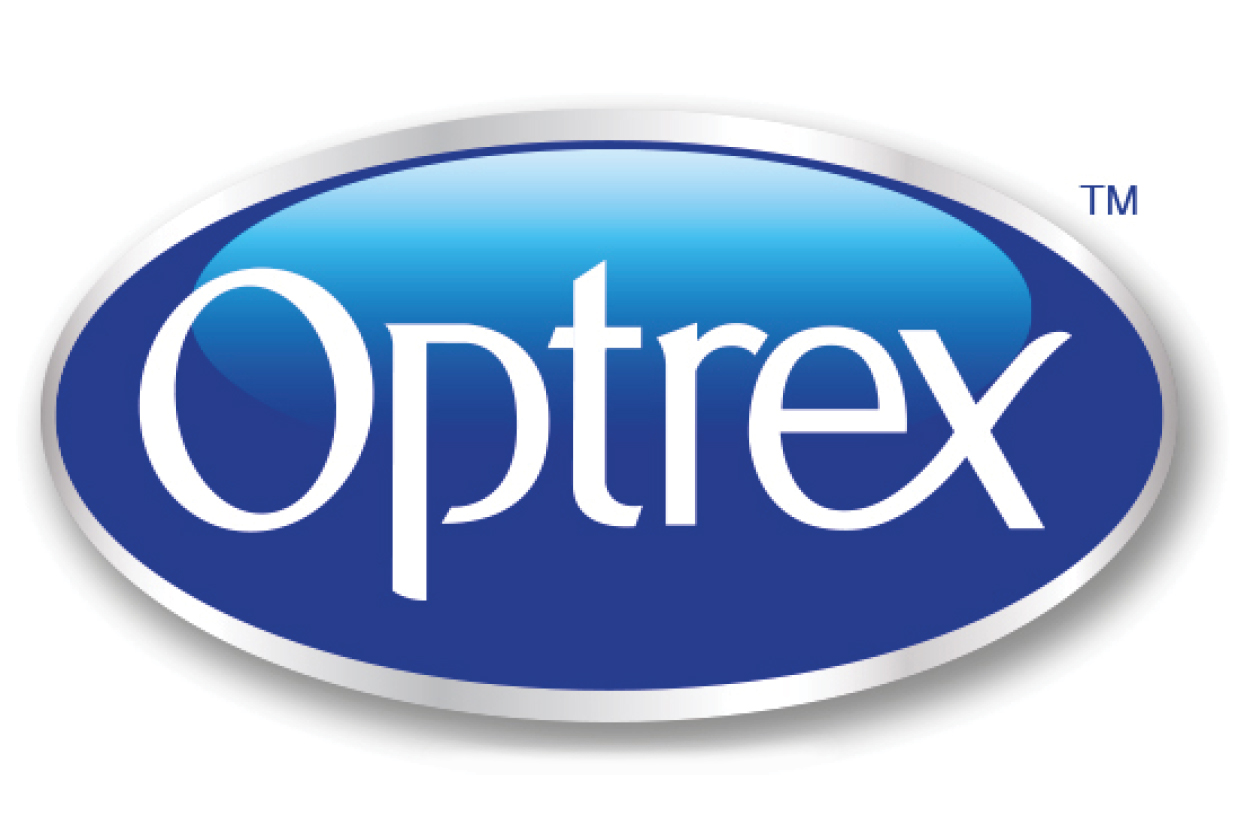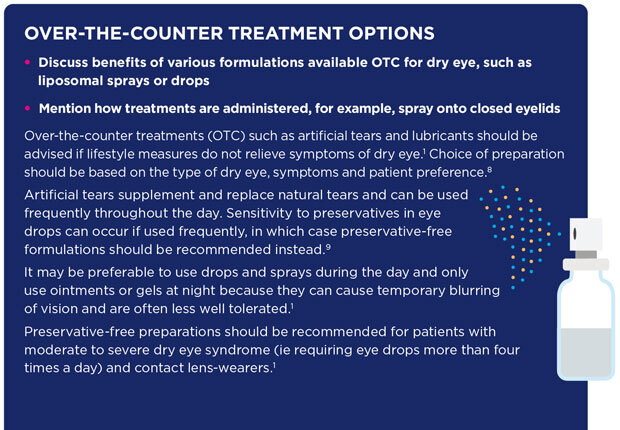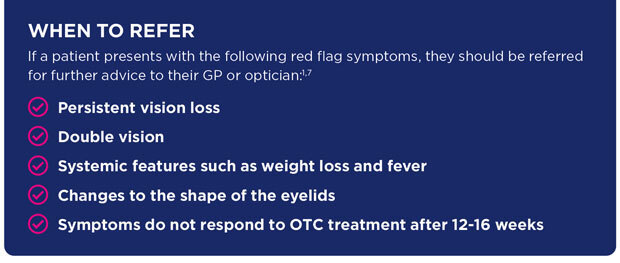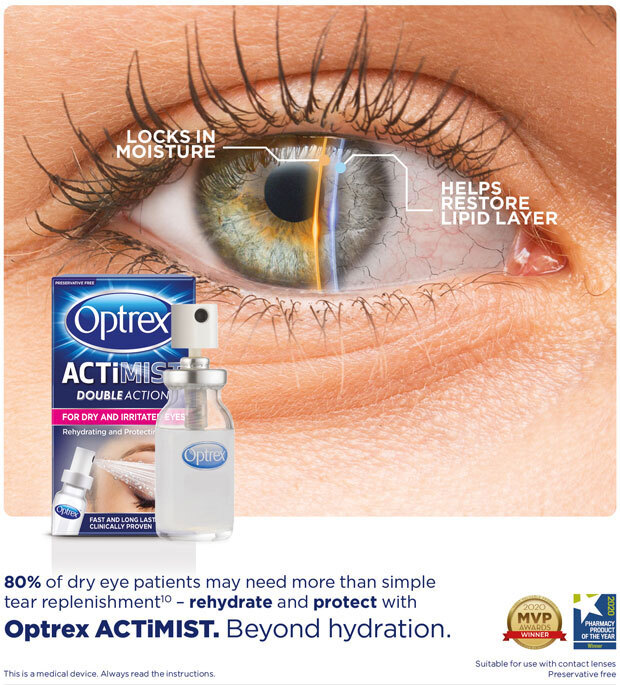Managing dry eye in the pharmacy
Download the Managing dry eye in the pharmacy poster? here.
WHAT IS DRY EYE?
Dry eye syndrome is a common, chronic condition where the eyes do not make enough tears (aqueous tear deficiency) or when tears evaporate too quickly (evaporative tear deficiency), causing the eyes to become dry and inflamed.(1)
Aqueous tear deficiency is estimated to cause 10% of dry eye cases.(2) Up to 80% of dry eye cases are evaporative.(3,4)
Tear film is a thin fluid layer that covers the cornea and conjunctiva. One of its main functions is to protect and lubricate the eye surface. It comprises three layers:(5)
- INNER MUCIN LAYER – secreted by goblet cells
- MIDDLE AQUEOUS LAYER – secreted by lacrimal and accessory glands
- OUTER LIPID LAYER – secreted by Meibomian glands
WHAT ARE THE SYMPTOMS?
Signs and symptoms of dry eye can vary between each person, but usually occur in both eyes and can include:(1,6)
- Feeling of discomfort
- Soreness or grittiness
- Dryness
- Blurred vision
- Redness of the eyes or eyelids
- Sensitivity to light
- Itching
- Tired eyes
- Mucous discharge
PREVALENCE AND CAUSES OF DRY EYE
The incidence of dry eye syndrome occurs more frequently with age, and is more common in those aged over 50 years and in women.(1) It is also more common in those with connective tissue disorders, blepharitis, Meibomian gland dysfunction and those who have had refractive surgery. Contact lens wearers may also be at increased risk of dry eye syndrome.(1)
Some medicines can also cause dry eye as a side effect, such as retinoids, oral contraceptives, antihistamines, beta-blockers and anticholinergics. It is important to ask patients about their medication history during the consultation.(1)
Other causes of dry eye include; vitamin A deficiency, reduced blinking (associated with computer screen use or Parkinson’s disease) or underlying conditions such as Sjogren’s syndrome, allergic conjunctivitis and menopause. Environmental factors such as allergens and low humidity may also cause dry eye syndrome.(1)
WHAT ADVICE CAN PHARMACY TEAMS GIVE PATIENTS?
Pharmacy teams can give patients self-care advice for the management of dry eye syndrome, including:(1,7)
- Keep eyes clean and practice good lid hygiene
- Use warm compresses to improve spread of the oils produced by glands across the surface of the eye
- Take regular breaks from computer screens
- Lower computer screen to eye level
- Increase blink frequency at computer and when reading
- Use a humidifier to stop air getting dry
- Take a break from wearing contact lenses – changing lenses type or contact lens solution may help
- Avoid alcohol, smoking and exposure to cigarette smoke
References
- National Institute for health and Care Excellence (2017) Clinical knowledge summary: Dry eye syndrome
- Findlay Q, Reid K (2018) Dry eye disease: when to treat and when to refer. Aust Prescr. 41(5):160-163. doi:10.18773/austprescr.2018.048
- Dausch D, et al. Comparative study of treatment of the dry eye syndrome due to disturbances of the tear film lipid layer with lipid-containing tear substitutes. Klin Monbl Augenheilkd. 2006 Dec;223(12):974-83. doi: 10.1055/s-2006-927266
- Craig JP, et al. E.ect of a liposomal spray on the pre-ocular tear film. Cont Lens Anterior Eye. 2010 Apr;33(2):83-7. PMID: 20096622
- Dartt DA, Willcox MD (2013) Complexity of the tear film: importance in homeostasis and dysfunction during disease. Exp Eye Res. 117:1-3. doi:10.1016/j.exer.2013.10.008
- Moorfields Eye Hospital NHS Foundation Trust (2017) Dry eyes
- NHS (2018) Dry eye
- British National Formulary (2021) Dry eye
- The Royal College of Ophthalmologists (2013) Dry eye
- Messmer EM. The Pathophysiology, Diagnosis, and Treatment of Dry Eye Disease. Dtsch Arztebl Int. 2015; 112(5): 71–81.








